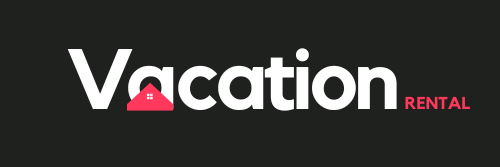As the summer of 2025 approaches, the dynamics of short-term rental markets indicate that property managers must adopt proactive pricing strategies to optimize their profits. The increasing frequency of local events, unpredictable weather patterns, and fluctuating occupancy rates exacerbate the challenge of setting competitive yet profitable rental rates. This article dissects the essential factors influencing strategic pricing decisions and offers actionable insights for those in the short-term rental industry.
Understanding Market Demand and Pricing Strategies
To effectively maximize profits in the short-term rental market, understanding the intricate dynamics of demand is crucial. In many regions, short-term rentals experience varied demand based on peak seasons, local events, and even weekday versus weekend preferences. Utilizing analytical tools can offer a competitive edge. Engaging resources like PriceLabs or Beyond Pricing can aid property managers in developing data-driven pricing strategies. These platforms assist by providing relevant market data and trend analyses necessary for informed pricing.
The demand landscape will be particularly influenced by consumer behavior changes post-pandemic. For instance, travelers now frequently book rentals closer to their travel dates, resulting in shorter booking windows. Recognizing this trend allows property managers to adjust their minimum stay requirements appropriately. Some properties may benefit from 3-night minimums during peak times, reverting to 1 or 2 nights as the date of arrival approaches.
- Consider adjusting prices based on local events.
- Maintain flexibility with minimum stay policies.
- Utilize data analysis tools to monitor booking trends.
Market Variations: A Comparative Analysis
While the overall market is recovering, significant regional differences exist. In the U.S. Southeast, for example, cities like Atlanta have reported extended stays and higher average daily rates (ADRs). Conversely, areas heavily dependent on international tourism, such as Orlando or New York City, showcase a softer demand right after major holidays. This information is critical as it allows property managers to tailor their offerings to local market conditions.
| Region | Demand Indicators | Strategies |
|---|---|---|
| U.S. Southeast | High demand, longer bookings | Set competitive prices 60 days in advance |
| London | Short stay dominance | Flexible minimum stays and dynamic pricing |
| Orlando & NYC | Fluctuating demand post-holiday | Adjust rates downwards to attract bookings |

Utilizing Local Events for Strategic Gains
Capitalize on local events to drive occupancy and revenue. Hyper-local happenings, like sports tournaments, fairs, or niche conferences, often go unnoticed by larger OTAs (Online Travel Agencies) but can significantly boost bookings for those in the know. Understanding and leveraging the local event calendar can lead to increased rates and higher occupancy during what might otherwise be slow periods. Property managers should proactively monitor local calendars and adjust pricing strategies in anticipation of upcoming events.
For instance, sports tournaments may attract families or groups needing short-term accommodations. By raising rates in advance as these events approach, property managers can maximize their earnings. It’s essential to communicate with guests about these events as well, demonstrating the property’s proximity and the benefits of choosing your accommodation.
- Utilize social media to track local events.
- Engage with event venues for partnership opportunities.
- Adjust rental rates ahead of confirmed events.
Engaging the Community
Another beneficial approach is to join local social media groups where community events are discussed. This will not only provide insights into upcoming happenings but also enable property managers to connect with potential guests by advertising special offers pertinent to those events. Engaging with the community enhances the property’s visibility and fosters relationships, encouraging guests to choose your listing when seeking accommodations.
| Event Type | Projected Impact | Recommended Action |
|---|---|---|
| Sports Events | High demand for group bookings | Increase rates and market properties as group-friendly |
| Festivals/Fairs | Attracts wide demographics | Prepare promotional discounts to attract attendees |
| Niche Conferences | Targeted audience stays | Market proximity to conference venue |
Weather Challenges and Their Effect on Occupancy
Weather can be an unpredictable challenge for short-term rentals, especially in summer when storms or unexpected rain can deter bookings. To mitigate the impact of adverse weather, proactive communication and strategic pricing adjustments can enhance guest experience and improve occupancy rates. For instance, offering suggestions for indoor activities and amenities can help maintain guest satisfaction, even on less pleasant days.
Additionally, when a forecast indicates bad weather, property managers can consider adjusting rates temporarily to attract last-minute bookings. By using solutions like PriceLabs, managers can override pricing automatically or manually, ensuring that properties remain visible and competitive in the marketplace.
- Provide guests with a guide to indoor activities in case of bad weather.
- Communicate proactively with guests about weather forecasts.
- Utilize pricing overrides during predicted dips in demand.
Enhancing Guest Experience During Troublesome Weather
Beyond adjusting pricing, it’s critical to ensure that the property remains an appealing choice despite poor weather. Providing items such as board games, indoor entertainment options, and cozy living space creates an inviting atmosphere, encouraging positive reviews and repeat bookings. Furthermore, offering amenities such as early check-in during inclement weather can delight guests and enhance their overall experience.
| Weather Condition | Suggested Guest Amenities | Action Plan |
|---|---|---|
| Rain | Board games, local museum vouchers | Prepare an indoor activity guide for guests |
| Heatwave | Air conditioning, pool access | Encourage booking with special summer rates |
| Storms | Emergency supplies, local event updates | Offer flexible cancellation policies |

Common Mistakes in Pricing Strategies
Even experienced property managers can fall into predictable pitfalls during high-demand seasons. Understanding these common mistakes can prevent lost revenue opportunities:
- Reliance on automation without manual oversight can lead to missed opportunities.
- Failing to set future season prices early causes missed bookings.
- Focusing only on the immediate calendar rather than looking ahead can result in occupancy gaps.
- Neglecting to monitor market pacing and demand trends can blind property managers to crucial shifts.
- Operational overload may lead to neglecting pricing strategy updates.
Mitigation Strategies
Addressing these pitfalls begins with proactive engagement with pricing tools. Regularly revisiting pricing and marketing strategies ensures responsiveness to market shifts. Keeping an eye on local events and demand trends, along with adjusting pricing manually when necessary, helps maintain a competitive edge. As 2025 unfolds, flexibility and responsiveness will be the keys to success.
| Common Mistake | Consequences | Corrective Action |
|---|---|---|
| Overreliance on automation | Missed pricing opportunities | Regular manual check-ins on pricing tools |
| Ignoring future bookings | Lost revenue from early planners | Update upcoming season pricing well in advance |
| Narrow focus on current demand | Occupancy gaps | Monitor demand trends 60 days in advance |
